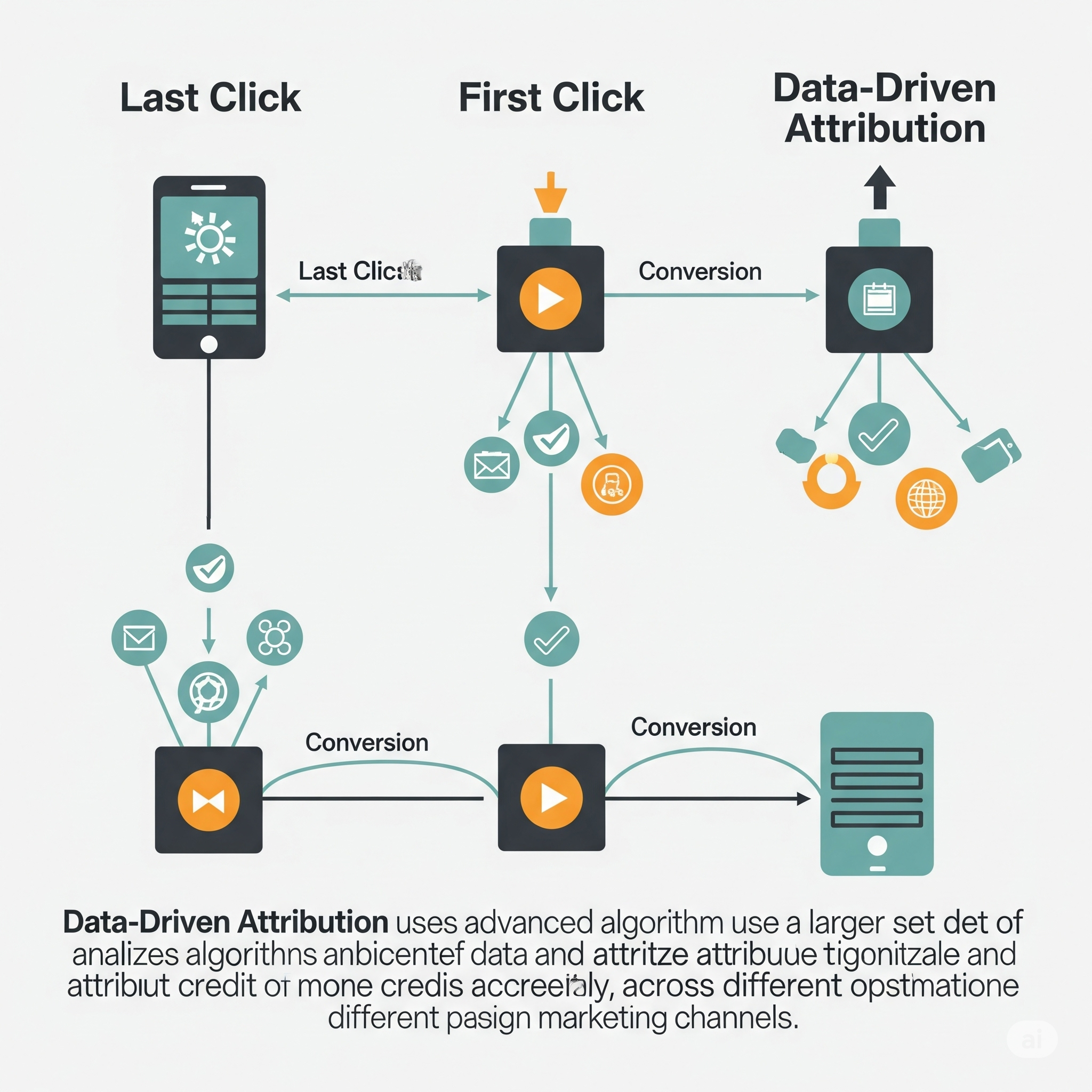In today’s digital landscape, marketers have more data than ever to understand customer journeys. But with so many touchpoints—from search ads and social media to email and organic search—pinpointing what actually drives conversions isn’t straightforward. That’s where attribution models come in.
Three of the most common models are Last Click, First Click, and Data-Driven Attribution. Each tells a different story, and knowing which one to rely on can drastically change how you allocate your budget and measure success.
Let’s break them down.
What Is Attribution in Marketing?
Attribution is the process of assigning credit for conversions (such as purchases or signups) to different touchpoints in a customer’s journey. The goal is to understand which channels and actions had the biggest impact on the final outcome.
Last Click Attribution
Definition:
Last Click attribution gives 100% of the credit for a conversion to the last interaction a user had before converting.
Example:
If a user first clicks on a Facebook ad, later sees a Google Search ad, and finally converts after clicking a branded email, the email gets all the credit.
Pros:
-
Simple and easy to implement
-
Focuses on the final push to conversion
Cons:
-
Ignores the influence of earlier touchpoints
-
Can undervalue upper-funnel efforts like awareness campaigns
Also Read: Advanced Facebook Ads Training
First Click Attribution
Definition:
First Click attribution gives 100% of the credit to the very first interaction the user had with your brand.
Example:
Using the same scenario, the Facebook ad would get full credit because it introduced the user to your brand.
Pros:
-
Highlights what’s driving initial interest
-
Useful for evaluating top-of-funnel strategies
Cons:
-
Disregards the nurturing journey and re-engagement efforts
-
May overvalue early touchpoints that didn’t directly lead to conversions
Also Read: Advanced Performance marketing Training
Data-Driven Attribution
Definition:
Data-Driven Attribution (DDA) uses machine learning to assign credit across all touchpoints in a user’s journey, based on actual impact. It looks at historical data and patterns to determine what combination of actions leads to conversions.
Example:
In the earlier scenario, DDA might assign:
-
30% credit to the Facebook ad
-
20% to the Google Search ad
-
50% to the email
Pros:
-
Reflects real user behavior
-
Adapts as your data evolves
-
Gives a fuller picture of the customer journey
Cons:
-
Requires sufficient conversion data to be accurate
-
More complex and less transparent than rule-based models
-
Not always available for smaller businesses or simple platforms
Also Read: Practical Digital Marketing Training
Which Attribution Model Should You Use?
There’s no one-size-fits-all answer. It depends on your business goals and resources.
| Model | Best For |
|---|---|
| Last Click | Small teams, simple funnels, direct-response campaigns |
| First Click | Brand awareness measurement, evaluating acquisition channels |
| Data-Driven | Larger businesses with high data volume, advanced campaign strategies |
For most businesses, starting with Last Click or First Click makes sense while gradually transitioning to Data-Driven Attribution as data maturity increases.
Final Thoughts
Understanding how your marketing channels work together is crucial in optimizing your campaigns. While Last Click and First Click offer quick insights, Data-Driven Attribution is the most accurate reflection of real consumer behavior.
As your business grows, so should your attribution model. Don’t just ask what converted?—ask what influenced the journey?
